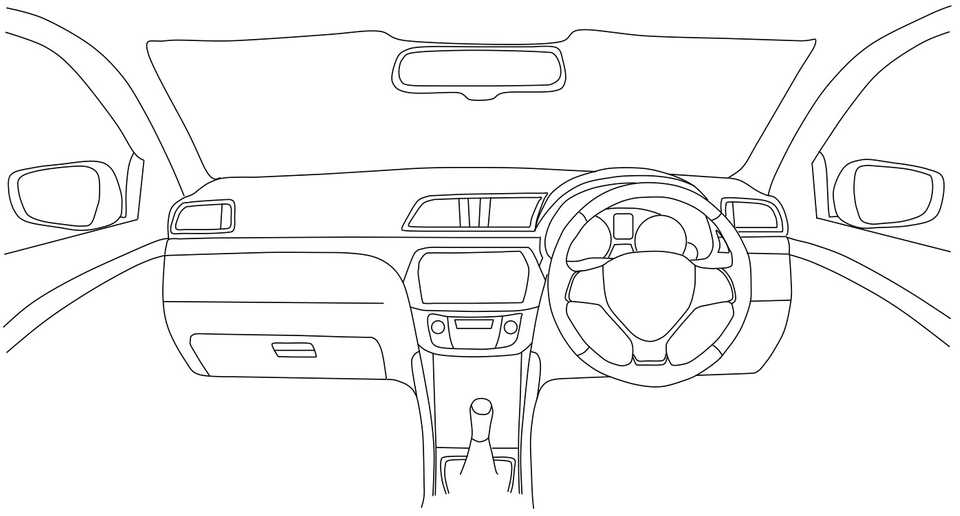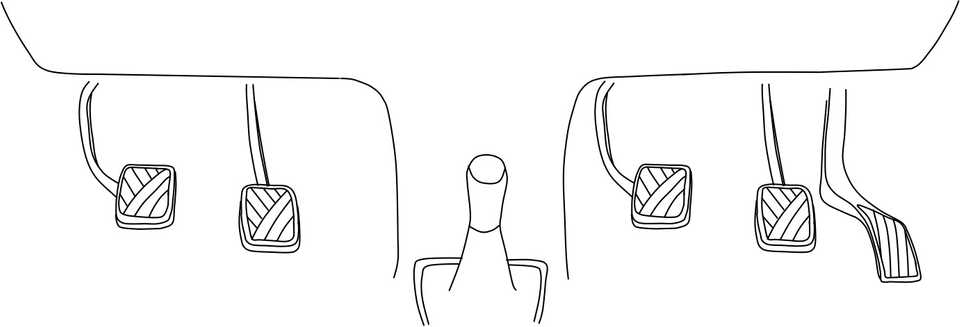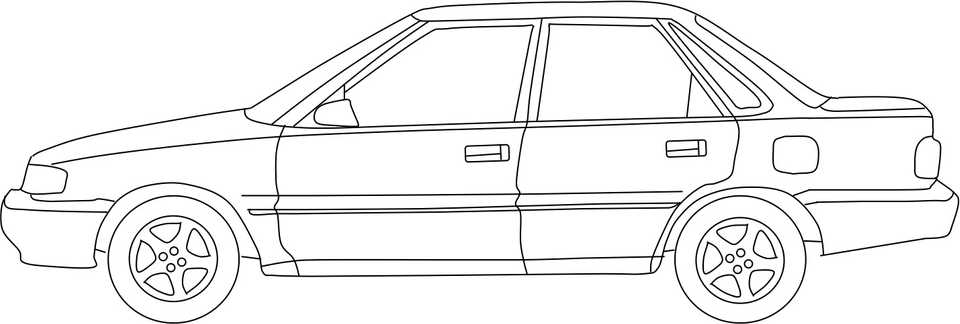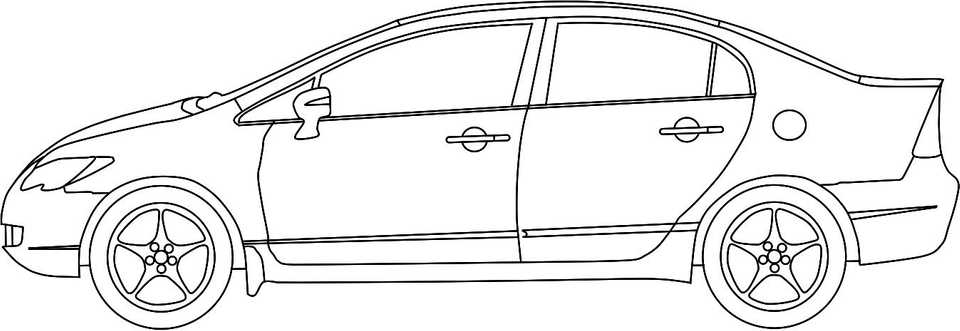I grew up in Mumbai with nary a want or thought for a car. Anyone who studied or worked in Mumbai, in the 80s and 90s, would know that you could get around wherever you wanted to go, although you would get jostled a bit. Save for a few wee hours between midnight and 4 am, it was possible to get a ride that could get you almost anywhere. Ok, I admit “getting jostled” is a bit of a euphemism for how tightly packed with people, the many of rides of Mumbai can be. Just to manage the physical stress of traveling, you needed to plan your trip and save yourself from the worst of crowds. But for me walking or riding in autorickshaws, taxis, buses and trains were ready options that never felt like they put a crimp on my plans. I had come to not mind the jostling bit too much. In fact, I only enrolled in a driving school to learn to drive, since I had plans to study in the United States.
The driving school offered a package deal — 20 sessions of 30 minutes each, covering theory, signages, signals and real-world driving in a car with trick pedals; followed by an escorted visit to the licensing centre, a car to give the driving test in and all the paperwork taken care of. After getting through my initial hiccups, I kind of started liking driving. It was remarkable how you could operate the steering and the pedals and make the car go slow, fast, left or right. I mean this stuff really worked! So I completed my sessions, gave the test, got my driver’s license and that was that. I didn’t drive again for perhaps a year, and went back to walking or riding one of Mumbai’s several rides. Then my plans for higher studies worked out. In that context, a senior of mine from college who had graduated before me sent me a picture of him with his car (incidentally, taken with a film camera and scanned, to give you an idea of the time). And the image stuck.
On my first flight from India to the United States, looking at the birds-eye view, I was struck by one aspect of the contrast between Indian, European and US airports. In India, as you land or take off, you see a dense cluster of buildings and a relatively low density of roadwork. In Europe, the cluster of buildings becomes sparser, and you feel there is a lot more road. In the US, as you approach closer to the ground, the most remarkable thing you see are the parking lots — stretching out and occupying several-fold more space than the structure they surround. Of course, the buildings are sparser and there is a lot of roadway, but really it’s the parking lots that tell you something — the aspiration of personal mobility hand in hand with the relative paucity of public transport. That and the image of my friend with his car, meant that I was going to buy a car sooner rather than later. Sure enough, within a year of arriving in the US, I bought this.
It wasn’t much to look at (although I kind of dig that boxy styling now) and other than air conditioning and power steering it didn’t have any features to speak of. It was less expensive than my laptop, and today it is possible to spend more on a smartphone. It was an A-to-B kind of car then, meant to fulfil the aspiration of personal mobility. But it was not entirely lacking in verve. I drove a fair deal in the US with the car taking me door to door where I wanted, whenever I wanted. I even drove on a number of solo ten hour drives when the situation so demanded, or when I contrived the situation so. Two aspects really struck me — one, how deep a part of the American life getting a license and owning a car was, and two, how disciplined and stress-free it was to drive in the US — both of which were also things that were simply taken for granted but in stark contrast with life in India.
Two phrases represent these two aspects for me — rite of passage and right of way — which I have taken the liberty to combine into the title of this post. Buying your first car in the US, is a rite of passage from being a child to becoming an adult. It is maybe the last major endowment from your parents — what you would use to leave your parents’ home and set out to make a life of your own. It is different in India. With an ownership ratio of about 30 cars per thousand people in comparison to about 800 in the US, a car just isn’t so significant in one’s early life in India. Besides, the only reason you leave your parents’ home is if you get employed in a different city or if the commute is terrible or if you get married. Owning a car in India is a rite of passage more akin to becoming a millionaire in the US, given that there are more than 30 millionaires per thousand people in the US.
The right of way is a concept that is central to the establishment and practice of traffic laws. It is what makes driving in the US relatively stress-free and disciplined. Equally, it is the utter lack of knowledge or observance of the right of way that makes driving in India, as annoying and dangerous as it is. Understanding and compliance of traffic laws is almost entirely taken for granted in the US. Not that they are observed all the time. But on the occasion that there is a traffic accident, the discussions and arguments between the parties involved and the cops are in a language and tone where knowledge and compliance of traffic laws is understood and expected. Contrast this with a traffic accident situation in India and all kinds of factors shape the altercation that ensues, including the size of the vehicles, the social standing of the drivers, their knowledge and competence with the local language and the social standing of the on-lookers. Still after the dust settles, it is often easy to determine the faulty party — it is usually the one who was inattentive or careless. But many times, the situation is also a result of a lack of a common understanding of the right of way, and assigning fault is tricky.
Despite the differences, car enthusiasts abound in India, the US and in many other places. What is a car enthusiast, really? Well there are some who spend their weekends under their car making it better, there are others who can’t wait for the next track day or road trip, and then there are those who know every feature of every variant of every car that is on the market. But in essence, a car enthusiast is one who revels in the human-machine connection, who understands the feeling of the car as a prosthetic, an extension of your being, with the ability to go anywhere and anytime. There are others for whom the car is equally significant, albeit in a more utilitarian sense: those who seek its comfort much like that of their home or work place equipped with nice seats, a good view, air conditioning and music; those who look at the car as a tool to get around in convenience and safety. Today we can look at a mass market car and see how it does so many different things really well, and yet it is forced to make a tradeoff between how well it serves its different functions. The feel and immediacy of response or economy and reliability of operation or comfort and luxury for the occupants or safety for those within and those without or value for your cash — which compromise would you rather have?
But compromise is not the only thing that is wrong with the car today. Several things are under question. The model of a few occupants in a metal cage powered by a fossil fuel making occasional trips is being questioned for whether it is sustainable, safe, efficient and even fun. What is the right fuel that should power the car? Should humans drive it or should it drive itself? What about the fact that a car is active for under 10% of the time? Should individuals even own the car? We have seen fundamental questions being raised, and radical solutions being tested. It all makes for an uncertain future. As a car enthusiast, I am rather optimistic. By being forced to choose between sport and utility, we will make a better vehicle. Maybe the car would be split cleanly into motorsports and utilitarian transportation, and we would have to let go of the middle ground of what we have come to know as personal mobility. “Door-to-door, efficient, sustainable — please step this way; sporty, edge-of-the-seat, adventure — yep, you too; the rest of you can go home”. But I doubt that there is a simple rite of passage to that or any other future. It will be complicated along the way. Meanwhile, I suggest you fasten your seat-belts and enjoy your rides. I know, I will!



